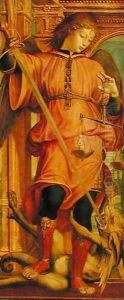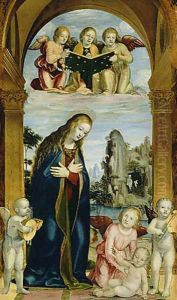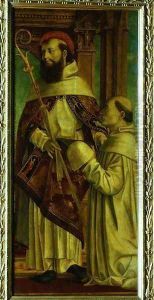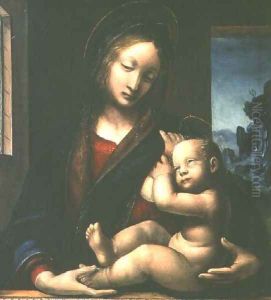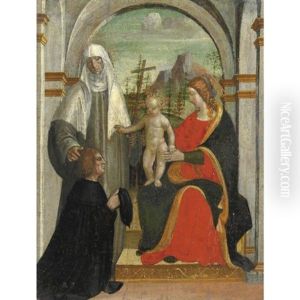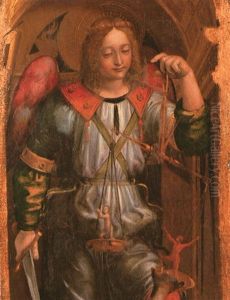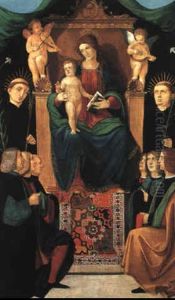Bernadino Zenale Paintings
Bernardino Zenale was an Italian painter and architect who was active during the Renaissance period. Born around 1460 in Treviglio, Lombardy, little is known about his early life and training. It is believed that he may have been a pupil of Vincenzo Foppa, an influential painter of the time, as his early works show a strong influence from Foppa's style.
Zenale's work was primarily religious in nature, and he was known for his altarpieces and frescoes. His painting style is characterized by its serene figures and a strong sense of perspective, which he possibly developed under the influence of Leonardo da Vinci and Bramante, whom he likely had contact with when they were in Milan. In 1489, he collaborated with Bernardino Butinone on a series of frescoes for the Grifi Chapel in the church of San Pietro in Gessate, Milan, which is considered one of his masterpieces.
Apart from painting, Zenale was also involved in architectural projects. He showed a particular interest in the application of mathematics to architecture, and he wrote a treatise on the subject, though it was never published. His architectural works include the design of the facade for the church of Santa Maria delle Grazie in Milan, although it is believed that his design was later altered by others.
Zenale was also a member of the commission that judged the entries for the design of the tiburio (lantern tower) of the Milan Cathedral in 1490. This commission included some of the most prominent artists of the time, such as Leonardo da Vinci and Bramante.
As an artist, Zenale adapted to the changing styles of the Renaissance period, integrating elements of the High Renaissance into his work while maintaining Lombard traditions. His later works displayed an increased use of color and a softer modeling of figures. Zenale's death in 1526 marked the end of a career that had spanned the transition from the Early Renaissance to the High Renaissance in Northern Italy. Despite his contributions to painting and architecture, Zenale has not been as widely recognized as some of his contemporaries, and many of his works have been attributed to other artists over the centuries.
